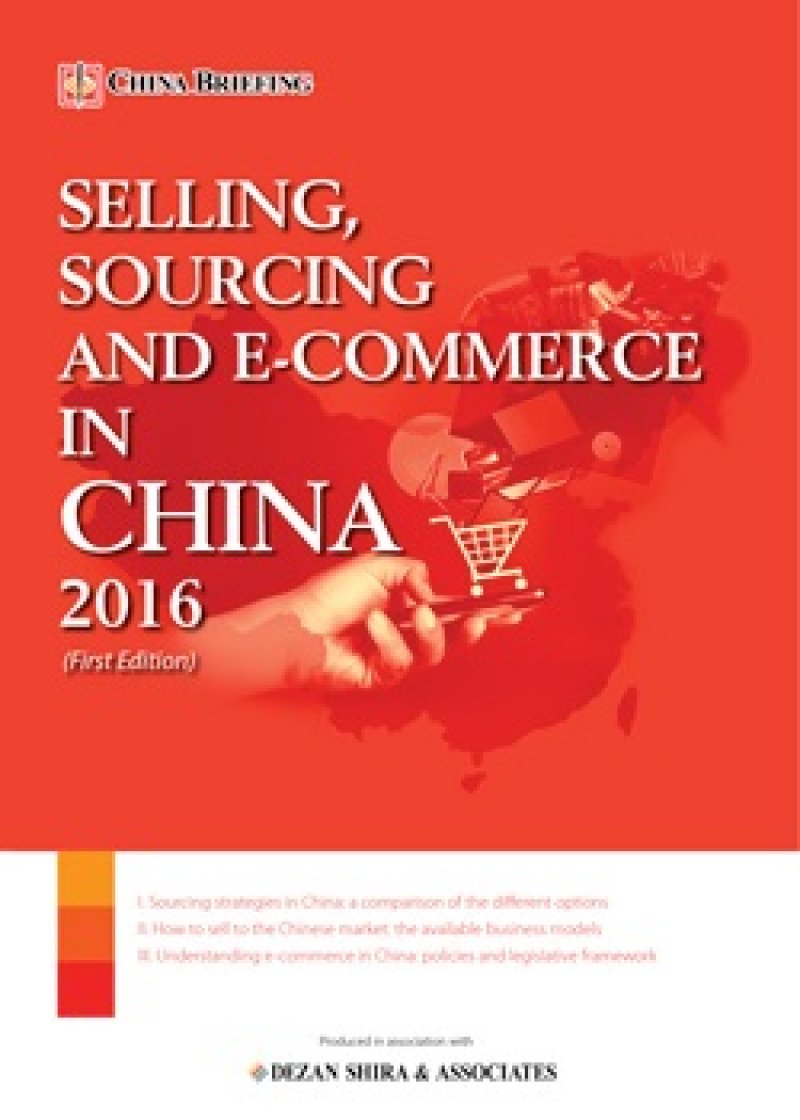
Selling, Sourcing and E-Commerce in China 2016 (First Edition)
Published: October 2015Selling, Sourcing & E-Commerce in China 2016, produced in collaboration with the experts at Dezan Shira & Associates, provides a comprehensive analysis of all the aspects of commerce in China. It discusses how foreign companies can best go about sourcing products from China; how foreign retailers can set up operations on the ground to sell directly to the country’s massive consumer class; and finally details how foreign enterprises can access China’s lucrative yet ostensibly complex e-commerce market.
No. of Pages: 71 pages
ISBN: 978-988-14804-0-8
Over the past few decades, China has developed into a manufacturing and trading powerhouse. Now known as the Factory of the World, China’s economic model has been built on producing low-end and, more recently, mid- to high-end goods and exporting them in mass volume across the world. Many tax, zoning and administrative policies still reflect this focus, such as the Processing Trade Relief, a program that waives duties and taxes for companies in China that manufacture solely for export.
However, the nature of China’s economy is changing. The Middle Kingdom is undergoing a major overhaul, transitioning to have a service and consumption driven economy. While rising wages have driven up disposable income, urbanization and the growth and expansion of the middle class in second and third tier cities means more and more consumers are demanding a variety of quality products, translating into opportunities for foreign retailers. This is especially true in the country’s massive e-commerce market – a sector that has undergone significant change in the past year to allow increased foreign participation.
This guide, produced in collaboration with the experts at Dezan Shira & Associates, provides a comprehensive analysis of all these aspects of commerce in China. It discusses how foreign companies can best go about sourcing products from China; how foreign retailers can set up operations on the ground to sell directly to the country’s massive consumer class; and finally details how foreign enterprises can access China’s lucrative yet ostensibly complex e-commerce market.
Since its establishment in 1992, Dezan Shira & Associates has grown into one of Asia’s most versatile full-service consultancies with operational offices across China, Hong Kong, India, Singapore and Vietnam, partnership offices in Indonesia, Malaysia, the Philippines and Thailand, as well as liaison offices in Germany, Italy and the United States. Dezan Shira & Associates’ experienced business professionals are committed to improving the understanding and transparency of investing in emerging Asia.
- Sourcing from China
- General overview
- Key China exports stats for the last 5~10 years
- Why China remains a popular sourcing destination
- Classification of specific products for export
- Sourcing models
- Major sourcing models
- Comparison of different models
- How to choose the right model
- China sourcing risks and strategies
- Common risks and problems encountered during the sourcing process
- Considerations and effective strategies when sourcing from China
- General overview
- Selling to China
- General overview
- Why is now an opportune time to sell to China
- Major Business Models for Selling to China
- Selling to China by using an agent or distributor
- Selling to China by setting up a legal presence
- Legal considerations for selling to China
- Common import licenses & industry specific licenses
- Certifications system for imported goods
- Mandatory requirements in product labeling
- Registration procedures for brand products
- Tax implications
- Case Study: Comparison of different distribution models for selling to China
- General overview
- E-Commerce in China
- General overview
- Stats & trends
- Nationwide access to China’s e-commerce market
- Current policies and legislative framework
- Analysis of the new legislation governing e-commerce
- Procedures for permits and approval
- ICP licensing and filing
- E-commerce options
- Procedures for setting up an online shop
- Selling through a local third-party platform
- Selling through a foreign website
- Logistics & Payments
- General overview

